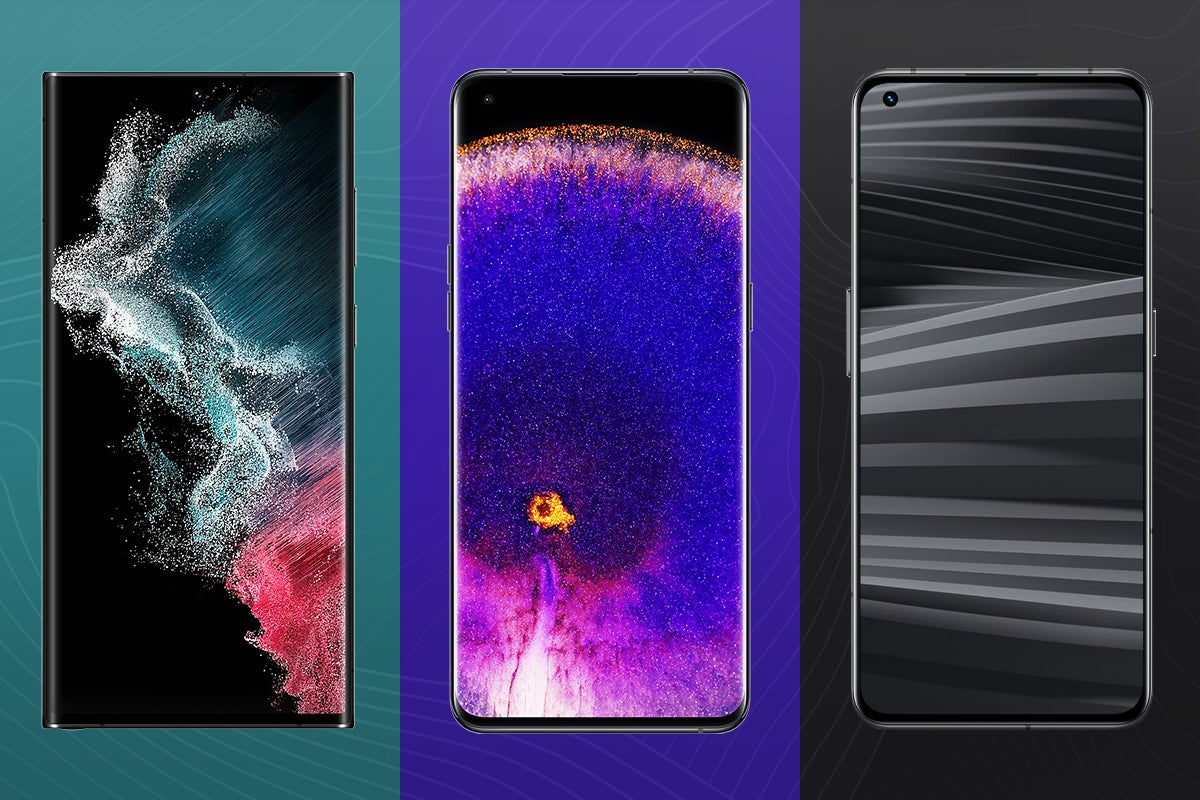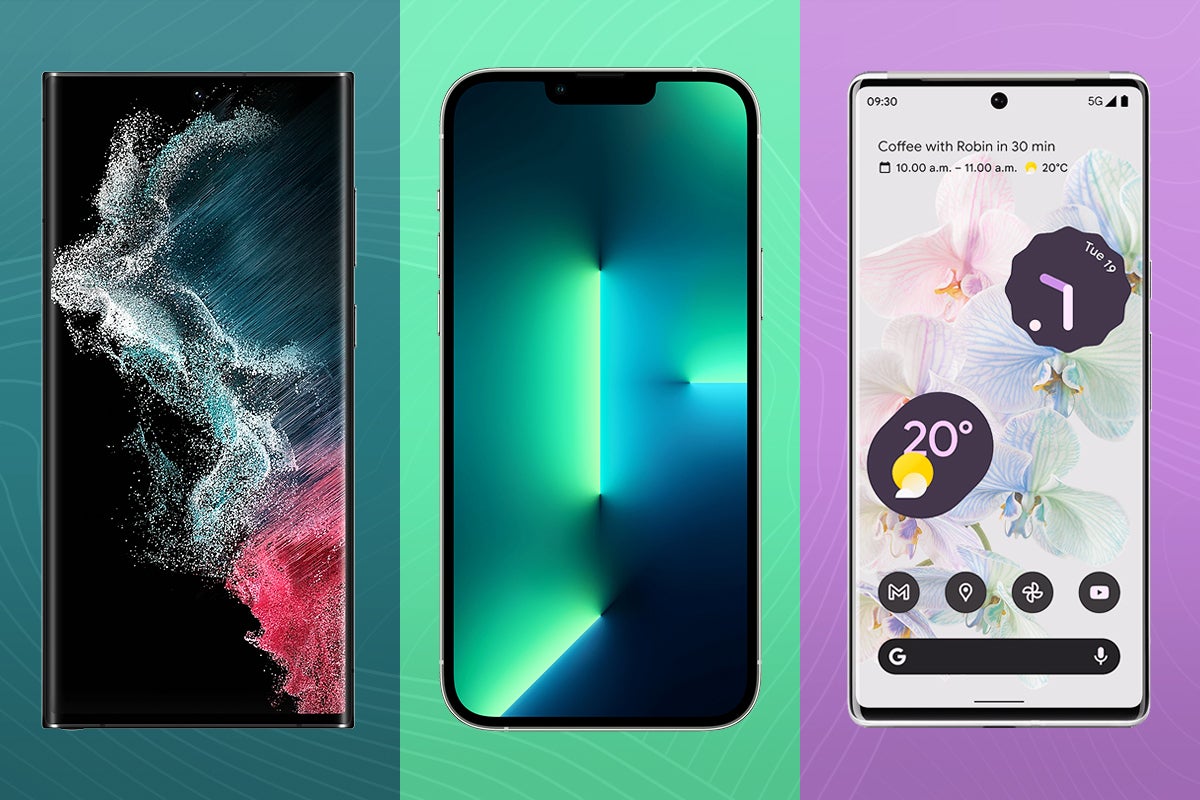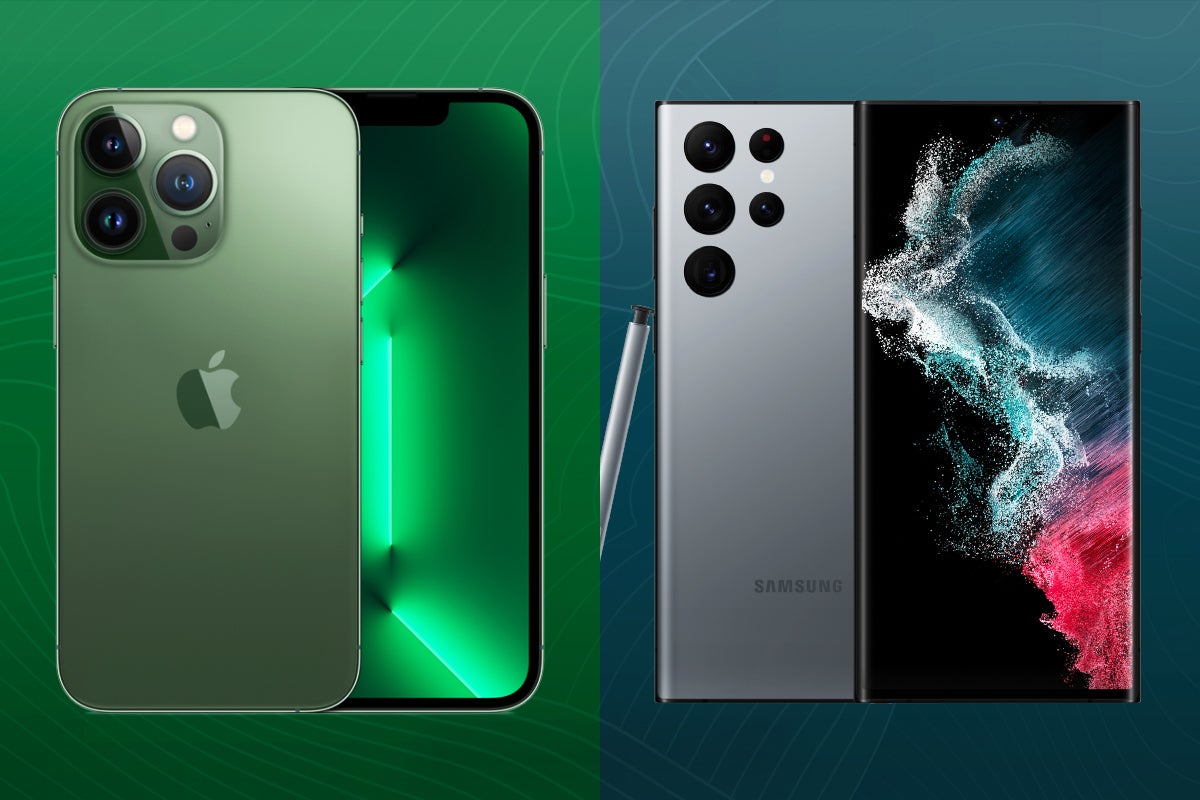Motorola Edge 20 Pro Review
Motorola makes some compromises here and there to accommodate a 5x pericope zoom camera in the Edge 20 Pro. But if you’ve been waiting some time for a somewhat affordable phone to push this particular area of camera tech, you’re in luck. Just make sure you’re happy with the few things it doesn’t do quite […]
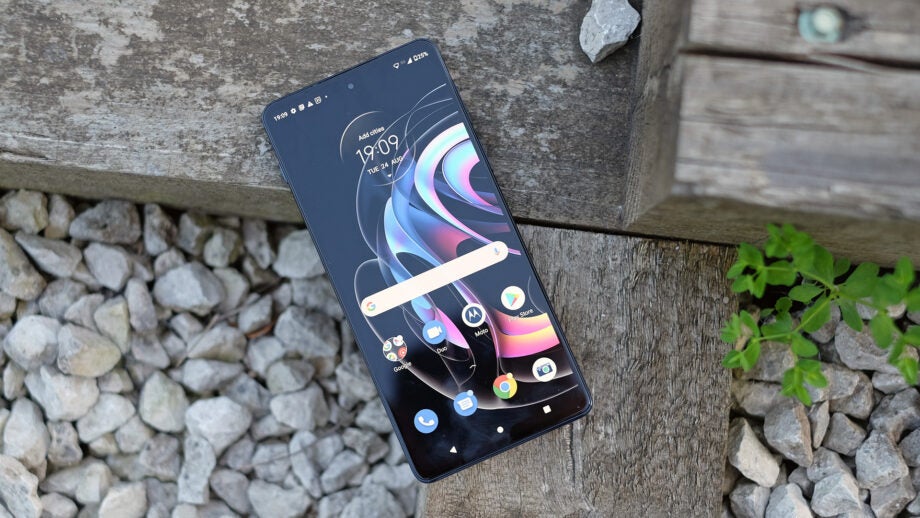

Verdict
Motorola makes some compromises here and there to accommodate a 5x pericope zoom camera in the Edge 20 Pro. But if you’ve been waiting some time for a somewhat affordable phone to push this particular area of camera tech, you’re in luck. Just make sure you’re happy with the few things it doesn’t do quite as well first.
Pros
- 5x zoom camera is rare at this level
- Solid outdoor display brightness
- Good general and gaming performance
Cons
- Mono speaker
- Main camera lags behind the best a little
- More powerful phones at available at the price
Availability
- UKRRP: £649
Key Features
- Semi water resistantIP52 certified design means it can survive occasional splashes
- Tripe sensor main camera108MP, (wide), 8 MP, (periscope telephoto) and16 MP (ultrawide) sensors
- Day long battery lifeOffers decent battery life despite having a smaller than average 4500mAh cell
Introduction
The Motorola Edge 20 Pro is the most expensive Motorola phone most of you should consider buying. Yes, that is throwing shade on the Motorola Razr 5G.
It costs £649, which is half the price of the true God-tier Androids, but Motorola has done its best to cram in almost every core feature present in those phones.
The Motorola Edge 20 Pro is slim, comes with a fast processor, a 5x zoom camera and can even record 8K video. It includes 256GB storage, too, when mid-price favourites such as the OnePlus 9 demand upwards of £700 for that upgrade.
You get a great spread of features in the Motorola Edge 20 Pro. However, it doesn’t act as a benchmark in any of them. Rivals offer better speakers, faster processors, brighter screens, fancier fingerprint scanners and cameras with better processing or superior low-light image quality.
So is the Motorola Edge 20 Pro a dud? Absolutely not. Motorola has simply chosen to downgrade slightly in a few areas, rather than cutting out features altogether, as you often see in other phones at the price. I’ll cover all the omissions in this review, but whether or not this phone belongs on your shortlist will depend largely on how much you want a “superzoom” 5x magnification camera.
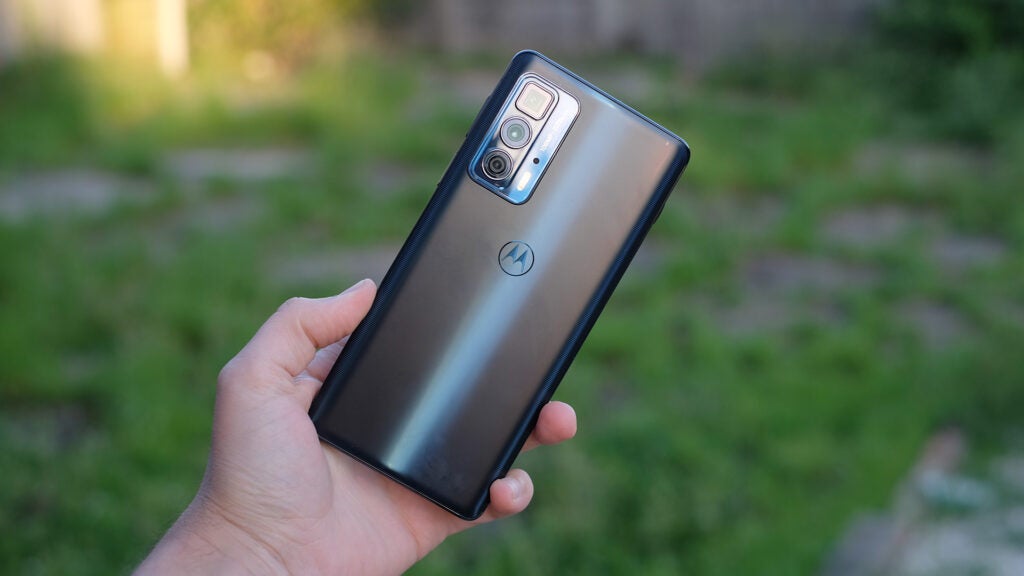
Design
- The Edge 20 Pro has a sleek design, by Motorola standards
- It offers very basic water resistance
- It has a side facing fingerprint reader
The Motorola Edge 20 Pro is one of the few Motorola phones that doesn’t feel somewhat chubby. The company’s entire G-series line comprises phones that are 9mm thick or more.
It’s a Motorola trait, one I’m always happy to ignore considering the phones come with reasonably large 5000mAh batteries. The Motorola Edge 20 Pro design is a little more elegant, however.
This phone has a depth of 8mm, so feels slim without the bundled silicone case in which I’ve used it 90% of the time. It’s also one of the few Motorola phones that isn’t largely made of plastic, and doesn’t use a cheaper alternative to Corning’s Gorilla Glass for the display protection.
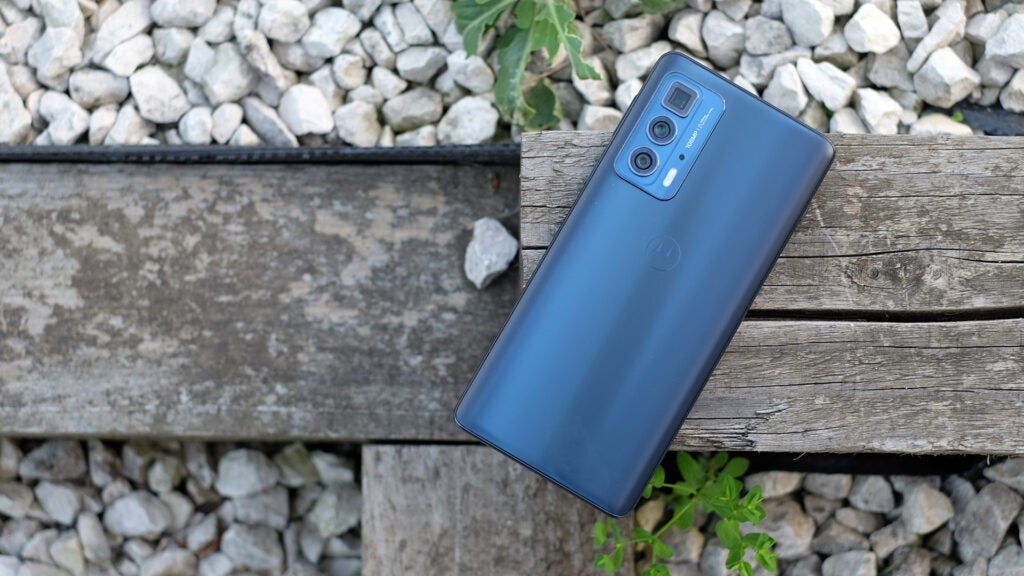
The Motorola Edge 20 Pro screen glass is Gorilla Glass 5, and the rear an unspecified “3D” glass, which means it curves at the sides. However, like so many phones in this class, it isn’t a full metal and glass construction. The sides are plastic.
I haven’t noticed this too much, what with the silicone case in place much of the time, but it does make the Motorola Edge 20 Pro feel noticeably less expensive than a device such as the Samsung Galaxy S21 Plus.
Still, things have shifted enough over the past 2-3 years for a part-plastic £650 phone to seem entirely normal nowadays.
The Motorola Edge 20 Pro offers basic water-resistance, too. It’s rated at IP52, which means it’s protected against dust, but is only rated to withstand rain and other water drips. This water resistance is similar to the “nano” coatings of other Motorola phones.
Style-wise, the Motorola Edge 20 Pro fine. It isn’t as distinctive as Samsung’s S21-series Android, but the matte finish on the rear glass is pleasant enough. Much like every other mainstream Motorola phone of this year, you get a sense that style hasn’t been a priority.
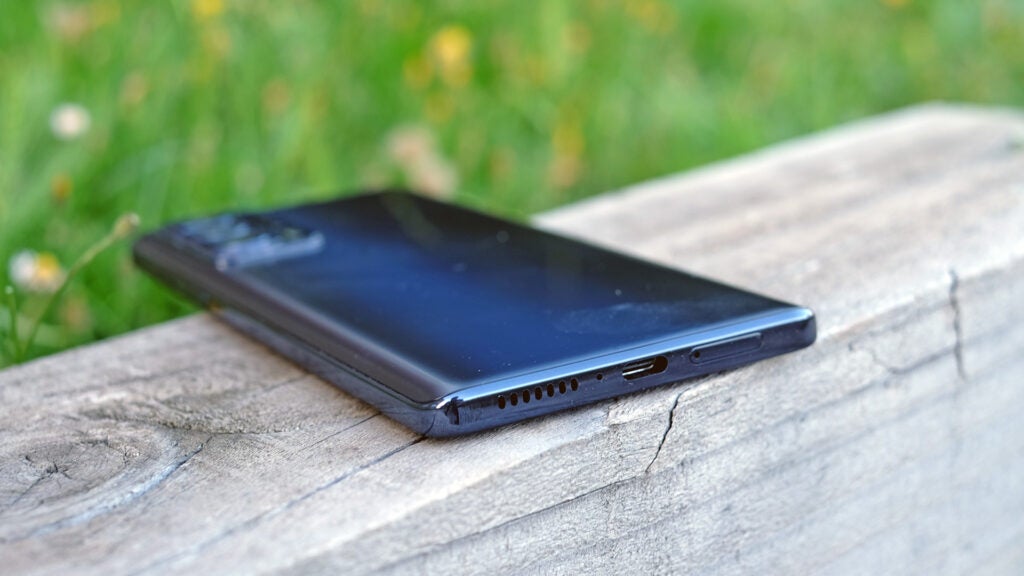
You’re likely to notice a couple of cost-saving measures to the outer hardware, too. The Motorola Edge 20 Pro has only one speaker, which sits along the bottom edge of the phone – but it delivers good volume. Some alternative devices come with stereo arrays, and slightly meatier sound.
In addition, the Edge 20 Pro’s fingerprint scanner sits on the side of the phone, not inside the screen. In-screen scanners are regarded as the slickest way to unlock a phone these days; but this pad is fast and reliable. A few days in, I wasn’t left wishing the Motorola Edge 20 Pro had an in-screen scanner. The placement of the pad is a little high, but still a good ergonomic fit for my hands.
The phone also has a Google Assistant button. These are often quite annoying, and have a habit of accidentally being pushed down in your pocket, waking up the assistant. Motorola has done its best to fix the problem by pushing the button way up the left side of the phone, and using a much stiffer mechanism. It works: I don’t think the Motorola Edge 20 Pro’s Google Assistant has been engaged once by accident. It’s a smart and thoughtful little design tweak.
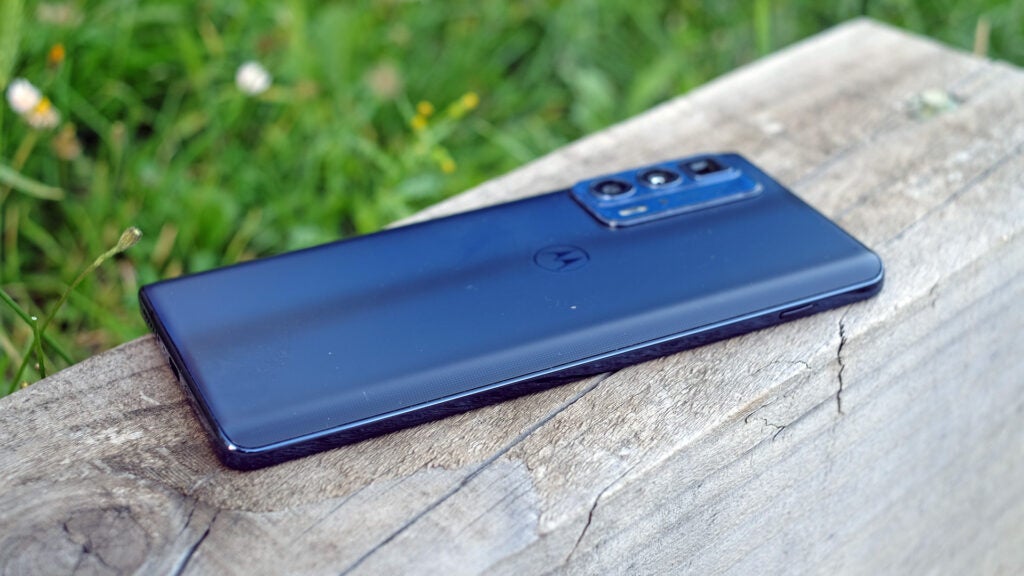
Display
- It has the best display seen on a Motorola phone this year
- The high refresh rate panel is great for gaming
The Motorola Edge 20 Pro has a 6.7-inch Full HD OLED screen, making it the best panel you can get in a 2021 Motorola phone.
A 144Hz refresh rate is its most eye-catching feature. Other phones may have 90Hz or 120Hz screens, but this one is even “faster”. I don’t think this is a real draw, though. Refresh rates this high may be great for super-powered gaming PCs or laptops, but I don’t see any obvious benefit over the more common 120Hz in a phone.
Let’s get real: Motorola has used a 144Hz panel here because it found one it could source at a reasonable cost.
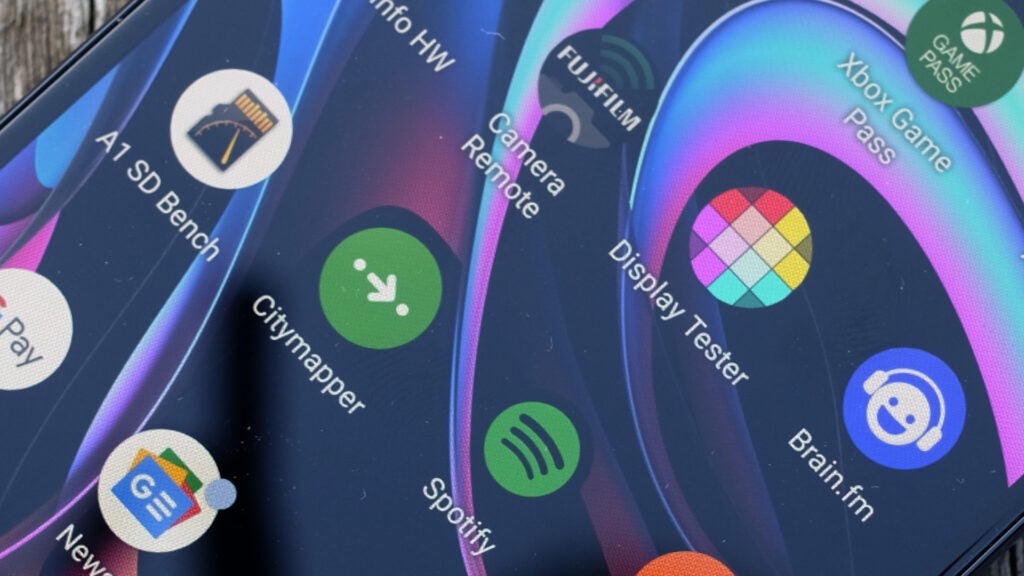
It’s a solid OLED display. There’s only a slight blue tint when it’s viewed from an angle, contrast is perfect, and you have a choice of two colour modes. Saturated seems to be based on the native colour of the panel, so looks quite oversaturated. Natural is more reserved, and appears better to my eyes.
Ultra-high brightness is the one missing piece, but what you do get isn’t bad at all. The Motorola Edge 20 Pro reaches around 450 nits indoors, rising to 650 nits when in direct sunlight, using the Adaptive Brightness mode.
While this isn’t as high as the 1000-plus nits seen in some top-end phones, I do find it bright enough to comfortably take photos outdoors on a sunny day.
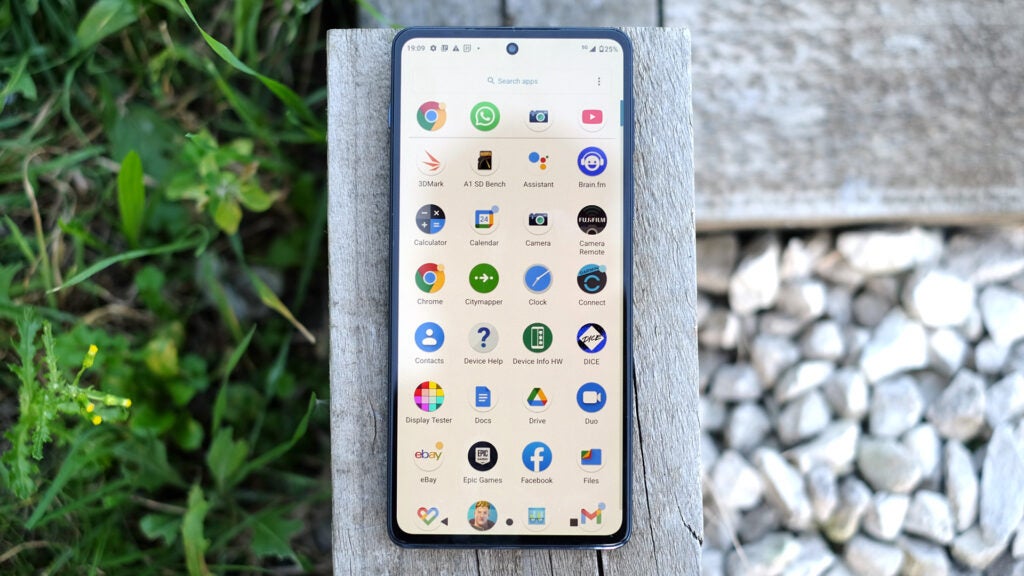
The use of an OLED panel also allows for the classic Motorola software add-on feature, a screen that pops up when the Motorola Edge 20 Pro is sleeping and is either moved or on a notification coming in. Per-pixel lighting means it uses relatively little battery, where an LCD would have to light the entire screen.
Software and Performance
- It has a wonderfully clean Android install
- There are basic motion controls for things like activating the flashlight
- It offers speed performance and 5G connectivity
The Motorola Edge 20 Pro runs an extremely clean version of Android 11. Motorola only puts one substantive app on here, called Moto, and this controls the little extras added to an interface that could pass for totally vanilla Android.
Anyone familiar with Moto-series phones may have experienced these before. Peek display, the lock-screen feature already mentioned, is the top addition. There are also shortcut gestures that can be enabled and disabled separately.
Two karate chops toggle the torch. You can touch the screen with three fingers to grab a screenshot, or twist the Motorola Edge 20 Pro twice quickly to start the camera. Motorola leaves most of these disabled as standard to avoid annoying accidental use.
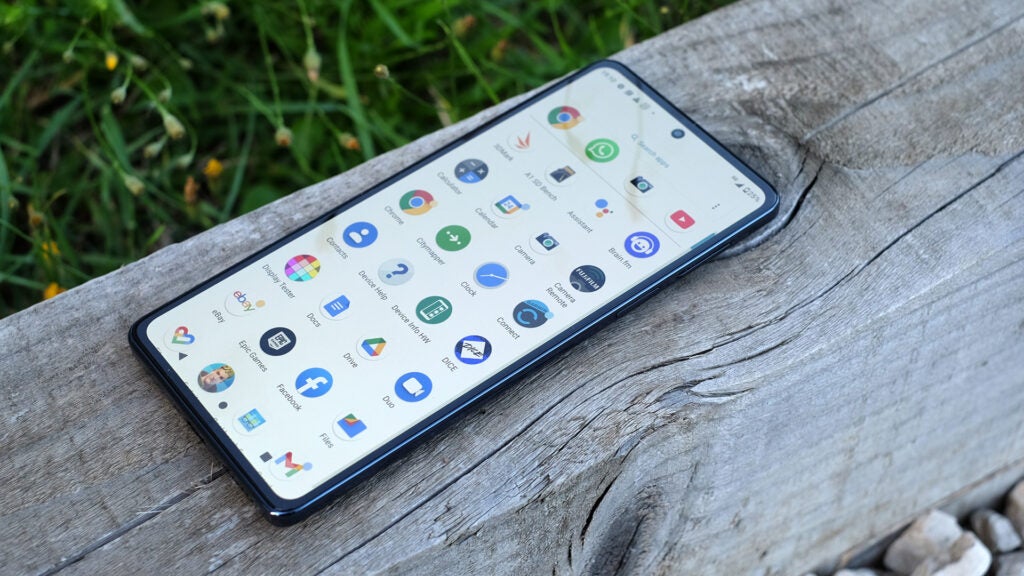
I have no complaints about the software. There’s virtually no “bloat” to the preinstalled apps. And even if there were, the 256GB storage means you’re basically complaining about being annoyed by extra icons on the screen.
If you want to complain about the Motorola Edge 20 Pro’s power, there’s a better argument to make. This phone has the Qualcomm Snapdragon 870 5G processor.
It’s effectively a tweaked version of last year’s Snapdragon 865-series chipset. The manufacturing process isn’t as advanced as the newer Snapdragon 888s, and its graphics chipset isn’t as powerful. If you want as much power as you can get for your money, check out the OnePlus 9 or Realme GT 5G. Those phones have the Snapdragon 888, and the Realme is a good deal cheaper.
However, I’m a fan of the Snapdragon 870, and the cheaper Snapdragon 860. Both get you flagship-grade performance, and let phone makers put more of their budget into other areas of a phone.
The Motorola Edge 20 Pro’s Snapdragon 870 destroys 7-series chipsets such as the brilliant Snapdragon 765G and 750G for gaming. In 3DMark’s Wildlife benchmark, the Edge scores 4262 points. While this is around 20% lower than the score you could expect from a Snapdragon 888 phone, it’s more than double the score of the OnePlus Nord, which features a Snapdragon 765G – and that phone already does a serviceable job with top-end games.
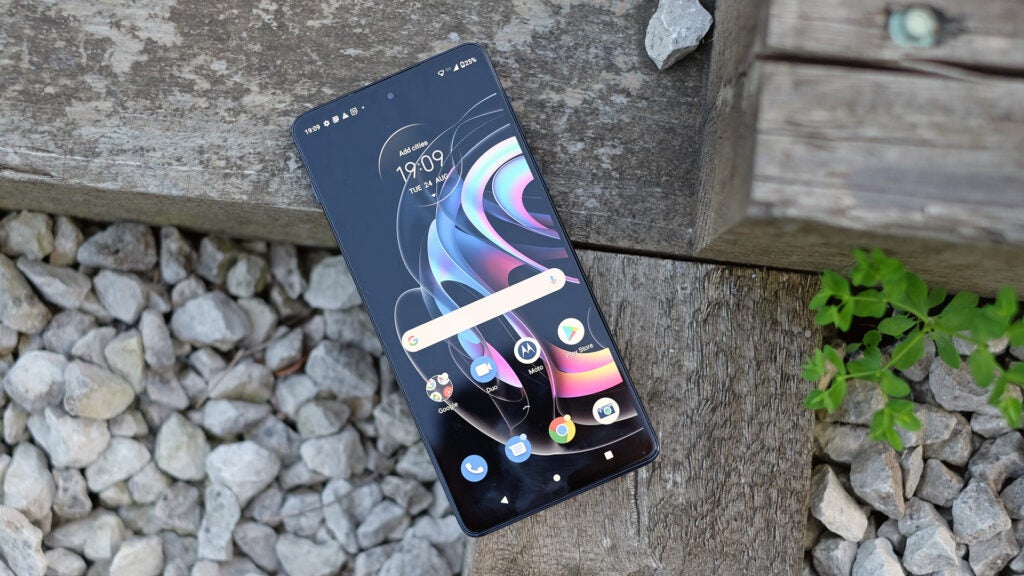
Fortnite runs very well with its graphics and resolution slider maxed. Epic Games doesn’t let you try out its 60fps mode, available in some phones, but the way the Motorola Edge 20 Pro seems to stick to 30fps aside from brief dips when new textures are loaded suggests it could achieve frame rates in excess of 30fps much of the time.
Similar to the OnePlus Nord 2 5G and its Dimensity 12000 5G chipset, while the Motorola Edge 20 Pro may not come with the most powerful processor around, it’s worth questioning whether you’ll actually notice or appreciate the difference. Some will, many won’t.
Camera
- The phone has a triple sensor rear camera setup
- It offers 5x optical zoom
- Camera quality is excellent for a phone this price
The Motorola Edge 20 Pro has three cameras, and one of them is this phone’s star feature.
Up at the top sits a 5x optical zoom with folded pericope optics. This means a 45-angled mirror diverts light by 90 degrees onto a sensor that sits perpendicular to the phone’s back, not parallel with it.
These kinds of camera must be expensive to produce, because you only tend to see them on very high-price phones. The Samsung Galaxy S21 Ultra is probably the best example today. It has a 10x periscope zoom, and a 3x non-folded one.
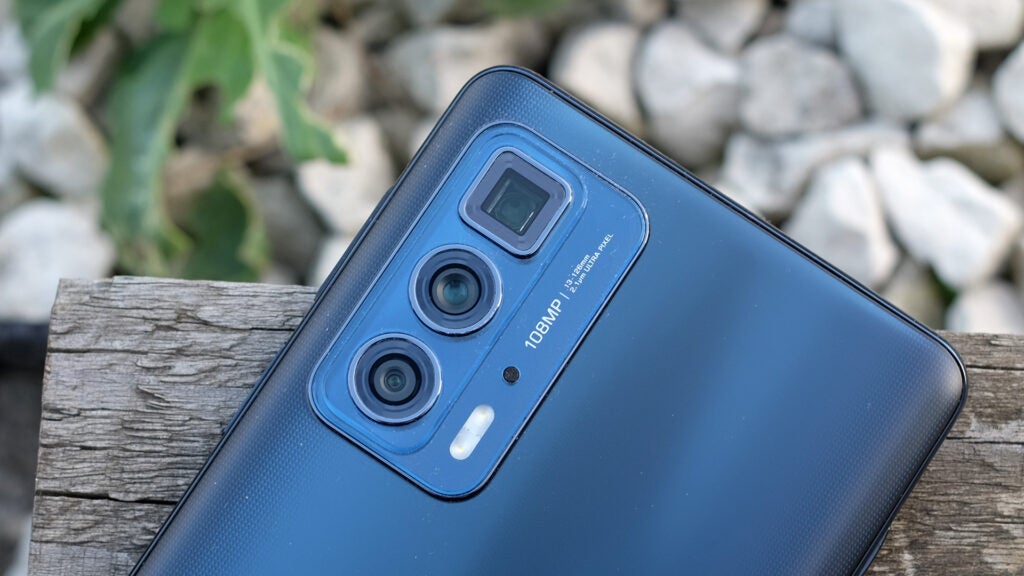
The Motorola Edge 20 Pro’s isn’t quite as good, but it’s the most powerful zoom I’ve used at this price to date. It’s great for gig photography, or those moments you find something interesting in the distance to shoot, only to find it looks hopelessly small through a “standard” camera view.
This zoomed camera is a little slower to use than the other two, with a little focus and shutter lag. But it’s still easy and fun to use, and has OIS. This stabilises the lens so you can take sharp images handheld. A 5x lens magnifies the effect of natural hand movement. OIS is pretty much essential at this focal length.
This is my favourite part of the Motorola Edge 20 Pro camera. No contest. But you should also approach it with realistic expectations.
The camera uses a tiny 1/4-inch Omnivision 8-megapixel sensor and a narrow aperture f/3.4 lens. Its native light sensitivity is poor compared to a good 1x zoom phone camera. Even the most expensive superzoom phones have to deal with comparable compromises, but I find they affect image quality more often here.

A slight increase in ISO – the sensitivity setting that cameras use to contend with lesser light – results in a swift drop in detail. And if you’re capturing a moving object, such as a duck on a pond, it had better be in bright conditions.
Low native sensitivity means the 5x camera will only use a truly fast shutter speed if there’s plentiful light in a scene. The Edge 20 Pro zoom also has a tendency to mush some foliage detail, even in perfect lighting. I can’t quite tell whether this is the result of exposure merging, used to improve dynamic range, or the image processing identifying its detail as noise and smudging it. But it happens.

Some will argue a 3x zoom would be more useful. If you’re in that crowd, check out the cheaper Motorola Edge 20, which comes with a 3x zoom. But I’m a fan of these extended zooms. I find they make me think a bit more deeply about the kind of shot I could get with a phone, rather than just pulling the device out when I spot a scene that looks nice based on what my eyes see in that moment.

The Motorola Edge 20 Pro’s other two rear cameras are a 108-megapixel standard view cam and a 16-megapixel ultra-wide.
Our main camera has a Samsung HM2 sensor, a fairly large and powerful chip. However, it doesn’t capture any more detail than the 12-megapixel Pixel 4a 5G; less in some cases. Like most high-resolution phones it actually creates 12-megapixel shots as standard. There’s an Ultra Resolution mode that creates 108-megapixel files, but using this mode usually isn’t the best idea since dynamic range is worse. While brightly lit areas of fine detail may look clearer, areas in shadow are often less detailed or flat-out fuzzy.

The primary camera here isn’t as good as the units that feature in the Pixel 4a 5G or OnePlus Nord 2 5G, in my opinion. Blown highlights are far more common here. Earthy browns often take a turn towards purple, an effect I’ve seen in other Motorola phones. Pretty much every sunset-style photo I’ve taken with the Motorola Edge 20 Pro has a big, red lens-flare splotch on it, and cleaning the lens doesn’t appear to help in this case.
Some of these issues are the result of Motorola’s processing. The flare is down to the lens. But the Samsung HM2 sensor’s presence in the much cheaper Realme 8 Pro suggests this is a budget-friendly chip.

I just haven’t been able to take as many pictures with the Motorola Edge 20 Pro’s camera that I’m actually happy with, as opposed to shots from the OnePlus Nord 2 5G or Pixel 4a 5G – although, on occasion, I can get the result I’m after by a quick Photoshop edit. This doesn’t apply to the Motorola Edge 20 Pro’s night photography, however.
The Motorola Edge 20 Pro does have a Night Vision mode, but it just doesn’t stack up well next to 2021’s top mid-range performers. Sure, it brightens up a scene, firms up detail and reintroduces colour absent from the “auto” mode photos you shoot at night. But it doesn’t provide the dramatic dynamic range and shadow detail improvement that’s beginning to drop down to phones at £400 or even below, perhaps originally spearheaded by the Pixel 4a.
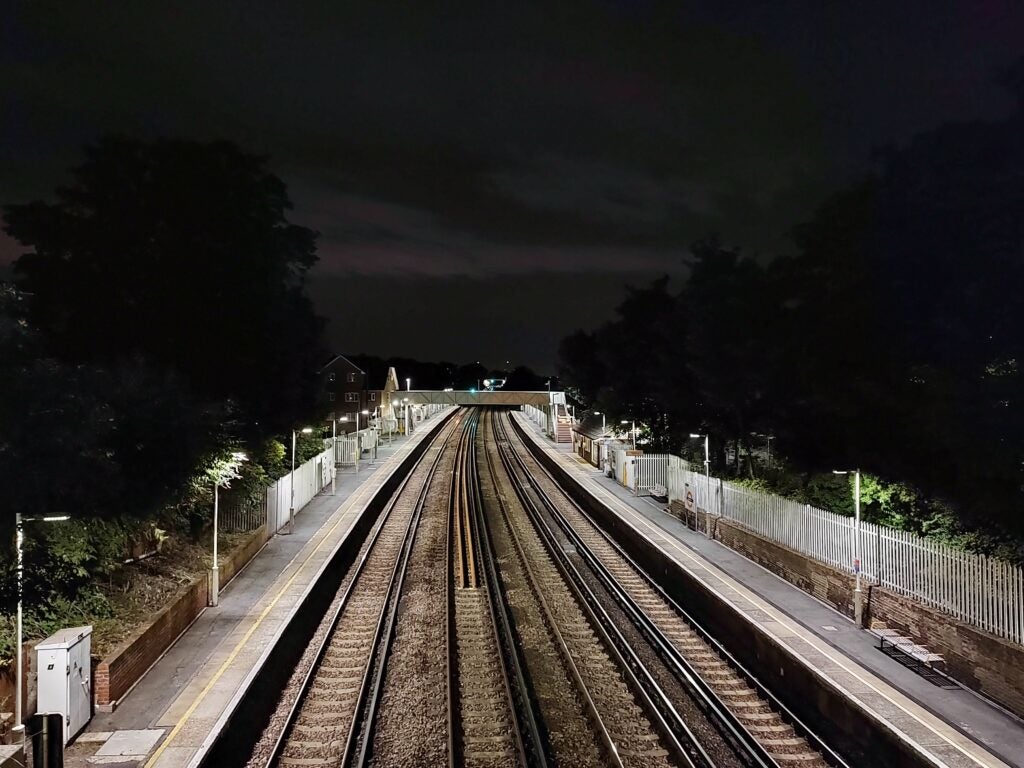
My expectations for the Motorola Edge 20 Pro’s 16-megapixel ultra-wide were much lower, so there are no such disappointments here. I think it’s a fine wide, with slightly better image quality than plenty of lower-mid-range Androids. When reviewing images on my MacBook, I’ve had to check the aperture to see whether it was shot with the 1x or 0.5x lens: a good sign. And I find the ultra-wide’s colour tone more consistent than that of the primary camera.


It’s a useful secondary field of view but, of course, the OnePlus 9’s quite brilliant 50-megapixel ultra-wide does make it look pretty bad. Still, that phone has the same effect on many rivals.
There are plenty of ups and downs with the Motorola Edge 20 Pro camera. An unusually potent zoom with expected compromises. Powerful-sounding main camera that doesn’t quite come up with the goods. As seen elsewhere, Motorola offers a breadth of features without entirely nailing the fundamentals.
My wording of some of this is perhaps slightly harsh. The phone’s three cameras are all decent, but the Motorola Edge 20 Pro isn’t quite the mid-range camera king I was hoping for on seeing the 5x zoom.

Video features are comprehensive. You can shoot detailed 8K video with a cropped view, although this footage isn’t stabilised, so I’d advise sticking to 4K capture unless you can use a tripod. Slo-mo offers up to 240fps at 1080p resolution, and this is supported by the sensor itself. As such, there’s no reason to suspect Motorola uses frame interpolation, where additional frames are created to make up the numbers.
The 32-megapixel selfie camera uses an Omnivision sensor, just like the ultra-wide and 5x zoom, and it offers fair-quality selfies. Detail is very good in bright lighting, but its pixel-binning technique doesn’t seem effective enough to avoid pictures turning stodgy indoors or poor lighting. You can, however, use the Night Vision mode for selfies, which improves matters significantly.
Battery life
- It has a smaller battery than most phones this price
- But still offers decent battery life
The Motorola Edge 20 Pro’s battery is smaller than that included in most Motorola phones. Its a 4500mAh battery, where most of the cheaper Moto-series phones come with a 5000mAh.
A smaller battery, larger screen, more powerful processor and 144Hz refresh rate sounds like a bad combo, right? However, I’m perfectly happy with the Motorola Edge 20 Pro’s longevity, and find it tends to outlast several of the true flagship phones I’ve used over the past 12 months with the same or similar battery capacity.
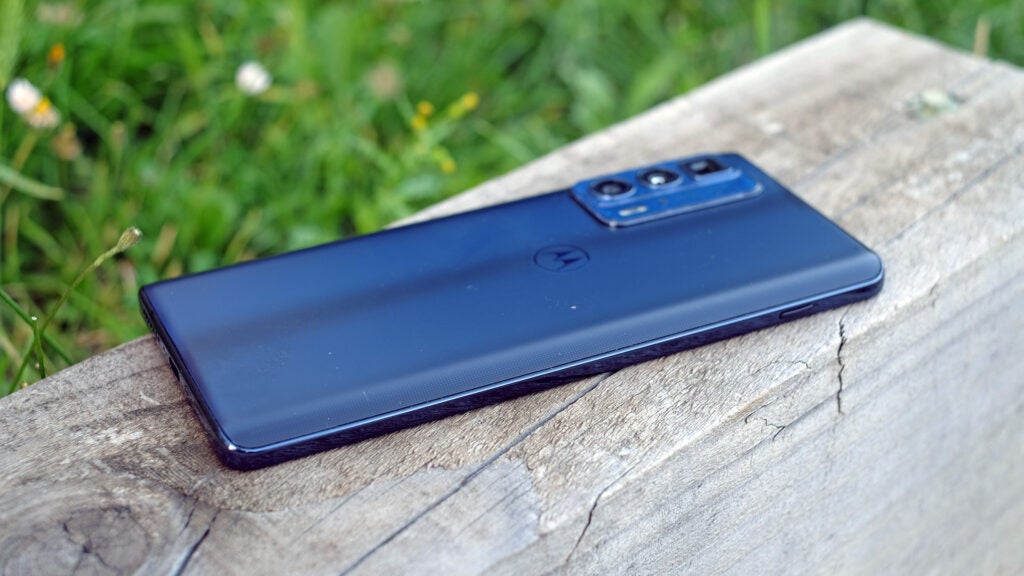
While the Motorola Edge 20 Pro has never lasted two days with my typical use, which involves above average podcast streaming and occasional deep dives into YouTube and harmless subreddits, I’ve never had to top it up to see it last until midnight.
Note that Motorola’s battery reporting seems to be slightly different to the norm. Even on heavier-use days, when it may be down to 40% by the early evening – which has happened a couple of times – the Motorola Edge 20 Pro has held onto that last tranche of charge way longer than I expect.
You get one solid to fairly heavy day of use from the Motorola Edge 20 Pro. That’s not the near-two days achievable from the Moto G50, but it isn’t a bad result considering the phone is thinner and much more powerful.
The handset’s OLED screen may play a part here. An hour of streamed video consumes just 6% of the charge level, although I tend to find real-world battery life is largely determined by battery capacity and the manufacturer’s software layer’s approach to background processes – if you’re dealing with similar-generation hardware.
The Motorola Edge 20 Pro offers 30W charging, and comes with a 30W charger in the box, unlike a charger-free Samsung Galaxy S21. This isn’t the fastest you can get at the price, beaten by the OnePlus 9’s 65W, for example. However, it’s reasonably quick, taking 31 minutes to reach 50%, from a battery so drained the phone won’t switch on. A full charge takes 1hr 25mins.
Latest deals
Should you buy it?
You want a reasonably affordable “superzoom” phone Handsets with a 5x zoom camera at this price are rare, and this lens is great for gig photography and nature shots when you can’t get too close to the subject. Some cuts are made elsewhere to include such hardware, but most don’t impact on day-to-day to a detrimental level.
You expect perfection everywhere The Motorola Edge 20 Pro may be a bit of a zoom master, but it isn’t an all-round photography pro. Other phones at this price and cheaper offer better HDR and low-light photography. You also need to be able to accept the mono speaker, and while the Snapdragon 870 CPU may be great, it isn’t on a par with the Snapdragon 888 offered by some alternatives with a slightly narrower feature focus.
Final Thoughts
The Motorola Edge 20 Pro is no also-ran mid-range phone. It’s one of the few sub-£1000 Android devices with a pericope zoom, which opens up the possibility of taking images that are beyond almost all of its rivals.
If that sounds great, you should consider the Motorola Edge 20 Pro. If, having read the review, you’re left wondering why you’d want a 5x zoom in a phone, then this probably isn’t the device for you.
It doesn’t nail some other aspects of photography quite as well as the very best sub-£650 Android phones, and if you’re happy to forego the great zoom then you can pick up a handset with an even more powerful CPU. Motorola has played the budget balancing act pretty well here in my opinion, but that it isn’t at the forefront of camera image processing shows up quite keenly in a phone at this level.
How we test
We test every mobile phone we review thoroughly. We use industry standard tests to compare features properly and we use the phone as our main device over the review period. We’ll always tell you what we find and we never, ever, accept money to review a product.
Used as our main handset during test period
Camera tested in variety of situations with all modes
Tested with synthetic benchmarks and real world use
FAQs
The phone has basic IP52 water/dust-resistance. It’s enough for rain, but not much more than that.
There’s no 3.5mm jack here so you’ll need to use a USB-C adapter or wireless headphones.
A 30W adapter gives the phone mid-speed fast-charging, which gets you to 50% in around 30 minutes.

